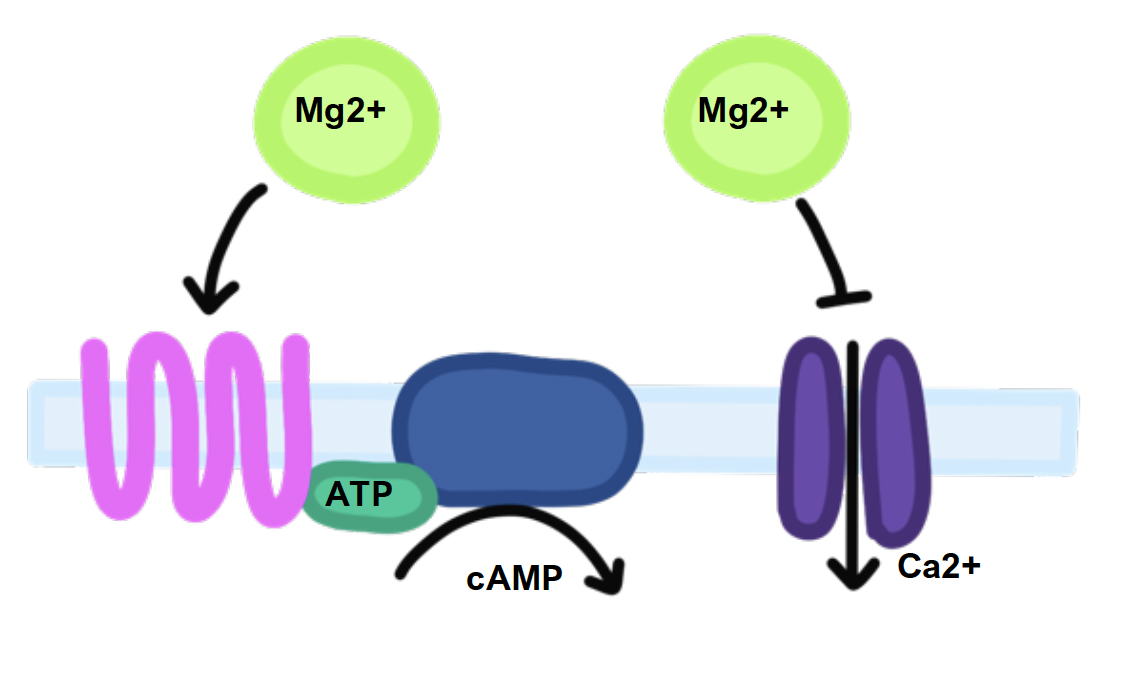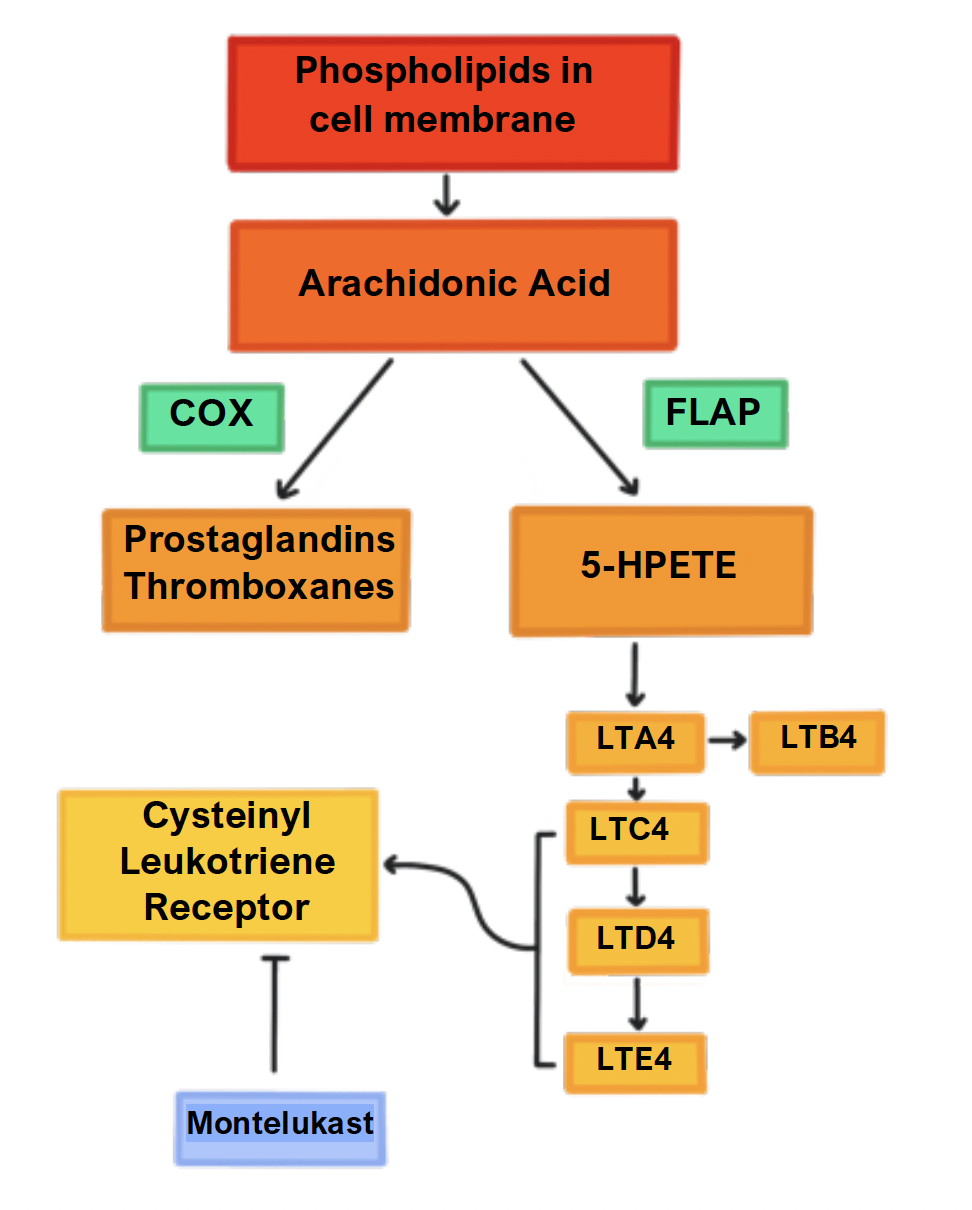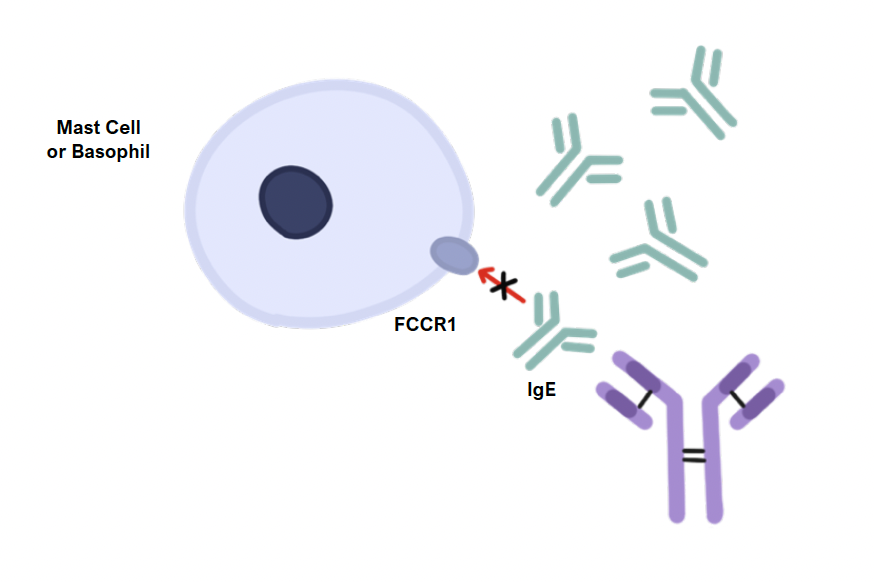Drugs for Asthma/COPD
The primary aim of these drugs is to reverse the bronchoconstriction which is obstructing the airway to improve air flow in and out of the lungs.
B2-Adrenoceptor agonists
These drugs stimulate Beta-2-adrenoceptors which result in bronchodilation and inhibit bronchial secretions.
They are split into short and long acting depending on whether to provide quick relief or chronic use.
Short acting (SABA) – Salbutamol, Albuterol
These are typically given as inhalers but can also be given by oral or IV preparations for acute attacks.
They are also used as tocolytics to suppress premature labour and treat hyperkalaemia
Long acting (LABA) – Salmeterol, Formoterol
They have a long lipophilic chain which binds to the receptor and slows the dissociation rate prolonging their long action
But it also gives these drugs higher B2 selectivity reducing side effects.
They are given as inhalants which are used in the prophylaxis of asthma.
Side effects
Muscle tremors and nervousness
Palpitations (due to B1 activity and peripheral dilatation)
Can also potentiate hypokalaemia (increases activity of sodium pump driving potassium ions into cells)
M3 – Muscarinic antagonists
These drugs antagonize ACh on M3 receptors to stop bronchoconstriction and inhibit bronchial secretions.
They are split into short and long acting depending on whether to provide quick relief or chronic use.
Short acting (SAMA) – Ipratropium
These are used in the acute setting of asthma and COPD and given as an inhalant.
Long acting (LAMA) – Tiotropium
This is a long acting antagonist that is used in the maintenance of COPD and asthma.
Side effects
Anticholinergic effects – dry eyes and mouth, drowsiness, constipation
Worsen glaucoma
Urine retention
Methylxanthines – Theophylline, aminophylline
These drugs cause bronchodilation through competitive inhibition of phosphodiesterase (PDE).
Inhibition of PDE increases intracellular cAMP levels.
This activates protein kinase A resulting in airway smooth muscle relaxation.
They are also antagonists at adenosine receptors (adenosine causes bronchoconstriction and histamine release).
They also stimulate mucus clearance and decrease histamine release.
Side effects
Palpitations – it inhibits PDE so increase cAMP, mimicking sympathetic activity on the heart
GI disturbance – nausea
Hypotension
Seizures
Toxicity and Management
Toxicity: These drugs have a narrow therapeutic index and are metabolized by liver enzyme CYP1A2.
If toxicity suspected, measure acute levels as the level correlates well with clinical severity
Management: Give activated charcoal to reduce reabsorption if recent ingestion. Definitive management is with haemodialysis
Supportive care includes diazepam for seizures, beta-blockers for palpitations and anti-emetics
Magnesium sulphate
Magnesium is an abundant intracellular cation which has a range of effects.
It acts as a calcium antagonist by stopping entry into smooth muscle.
It also enhances calcium ion uptake to sarcoplasmic reticulum, relaxing smooth muscle.
It inhibits ACh release while giving B2 agonism resulting in increased cAMP levels.
Therefore, it causes muscle relaxation which leads to airway bronchodilation.

Side effects
Headaches
Muscle weakness
Toxic effects can be reversed by calcium
Leukotriene Receptor Antagonists
Leukotrienes are chemicals made from arachidonic acid using the enzymes 5-or-12- lipoxygenase, present in inflammatory cells.
First LTA4 is made, which is broken down into LTB4/C4/D4.
These cause bronchoconstriction, increase vascular permeability and mucus secretion.
Leukotriene receptor antagonists inhibit these processes downregulating inflammation.
They are used in asthma prophylaxis often in combination inhalers.

Zafirlukast, montelukast
These are antagonists of the leukotriene receptor LT1.
They are very useful in the treatment of asthma
Zileuton
This is an inhibitor of the enzyme 5-lipozygenase
Side effects
Liver impairment with elevated LFTs
Depressed mood and suicidal thoughts
Corticosteroids
These have a host of actions on inflammatory cells: they decrease proliferation of T cells, mast cells and eosinophils.
They also decrease mucus secretion, epithelial cell cytokine secretion and relax smooth muscle.
They are available as inhaled or oral agents.
Corticosteroids and B2 agonists are used together and enhance each other’s effects.
Steroids increase B2 receptor transcription to prevent downregulation of receptors.
B2 agonists increase nuclear translocation of glucocorticoid receptors, enhancing the action of corticosteroids.
Inhaled steroids – Beclomethasone, Fluticasone, Budesonide
These are typically used as an initial maintainence treatment for asthma to prevent exacerbations.
Oral steroids – Prednisolone
These are used to treat exacerbations of COPD and asthma.
Whilst steroids are are commonly used, most COPD and some asthmatics have got steroid resistance
Believed to be due to less HDAC2 expression (histone deacetylase) which stops gene transcription
There is evidence that this might be reversed by theophylline
Side effects
Suppression of hypothalamic-pituitary-adrenal axis
Hoarse voice
Increased risk of oral thrush
Common steroid side effects (hypertension, weight gain, etc.)
Monoclonal antibodies – Omalizumab
This is anti-IgE antibody which blocks the binding of free IgE to mast cells
It is given by subcutaneous injection
Is is used for treatment of asthma who are no longer receptive to inhaled steroids and people with allergies.

Side effects
Anaphylaxis-like reactions
Disclaimer




